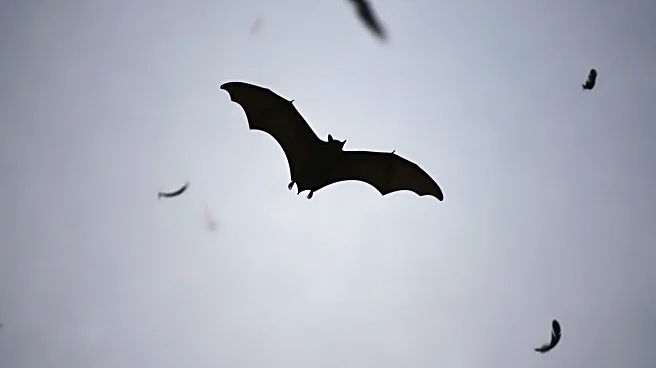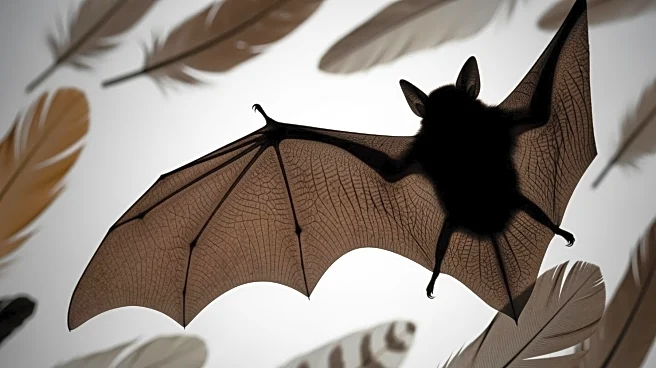What's Happening?
A recent study led by biologist Elena Tena from the Doñana Biological Station in Seville, Spain, has uncovered the hunting techniques of Nyctalus Iasiopterus, the largest bats in Europe. These bats, known as greater noctule bats, have been found to hunt birds
mid-flight, a behavior previously undocumented. The research involved attaching ultra-light sensors to the bats, which recorded sound, altitude, and acceleration, providing detailed insights into their nocturnal hunting strategies. The study reveals that these bats can catch birds in the air, a feat that requires precise maneuvering and echolocation.
Why It's Important?
This discovery sheds light on the complex predatory behaviors of bats and their ecological role in controlling bird populations. Understanding these interactions is crucial for biodiversity conservation and ecosystem management. The study also highlights the technological advancements in wildlife research, enabling scientists to gather data on elusive species. The findings could influence conservation strategies for both bats and their avian prey, ensuring balanced ecosystems. Additionally, this research may inspire further studies on the dietary habits and ecological impacts of other bat species.
What's Next?
Future research may focus on the broader ecological implications of bats preying on birds, including potential impacts on bird migration patterns and population dynamics. Scientists may also explore the sensory adaptations that enable bats to hunt birds effectively. The study could lead to the development of new conservation policies aimed at protecting both bats and birds, considering their interdependent roles in ecosystems. Further technological innovations in sensor design may enhance the study of other nocturnal predators, providing deeper insights into their behaviors and ecological significance.














